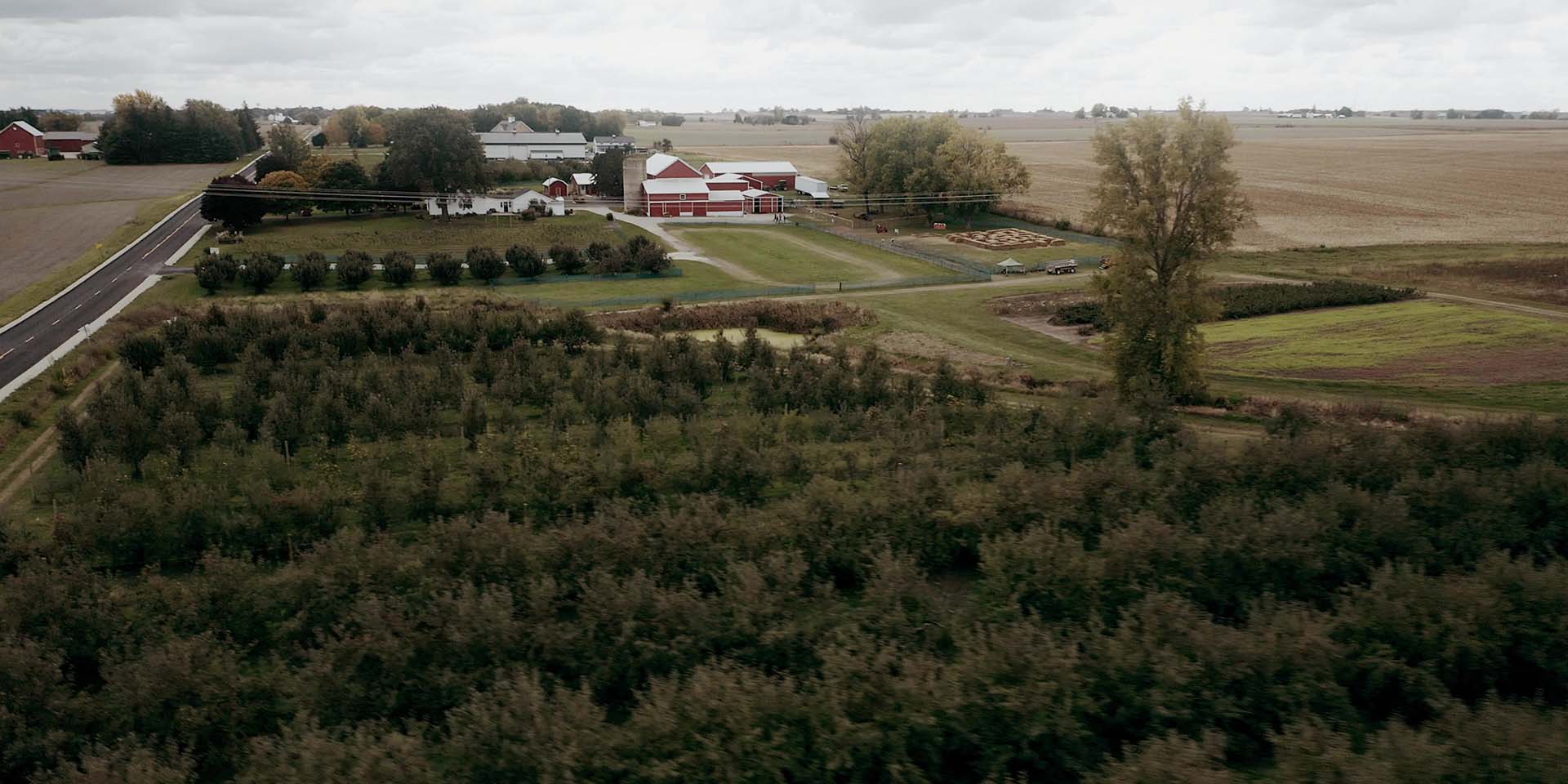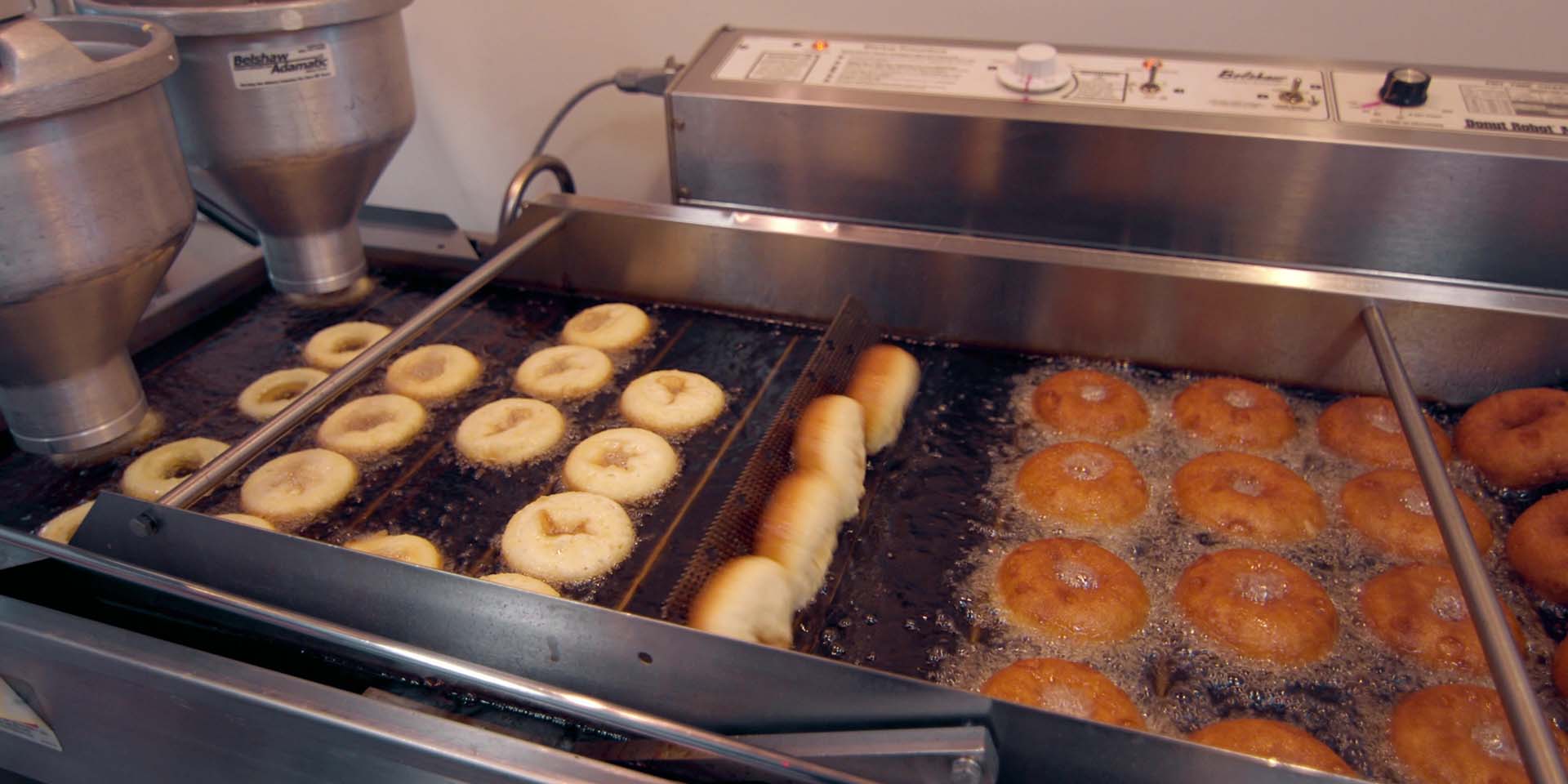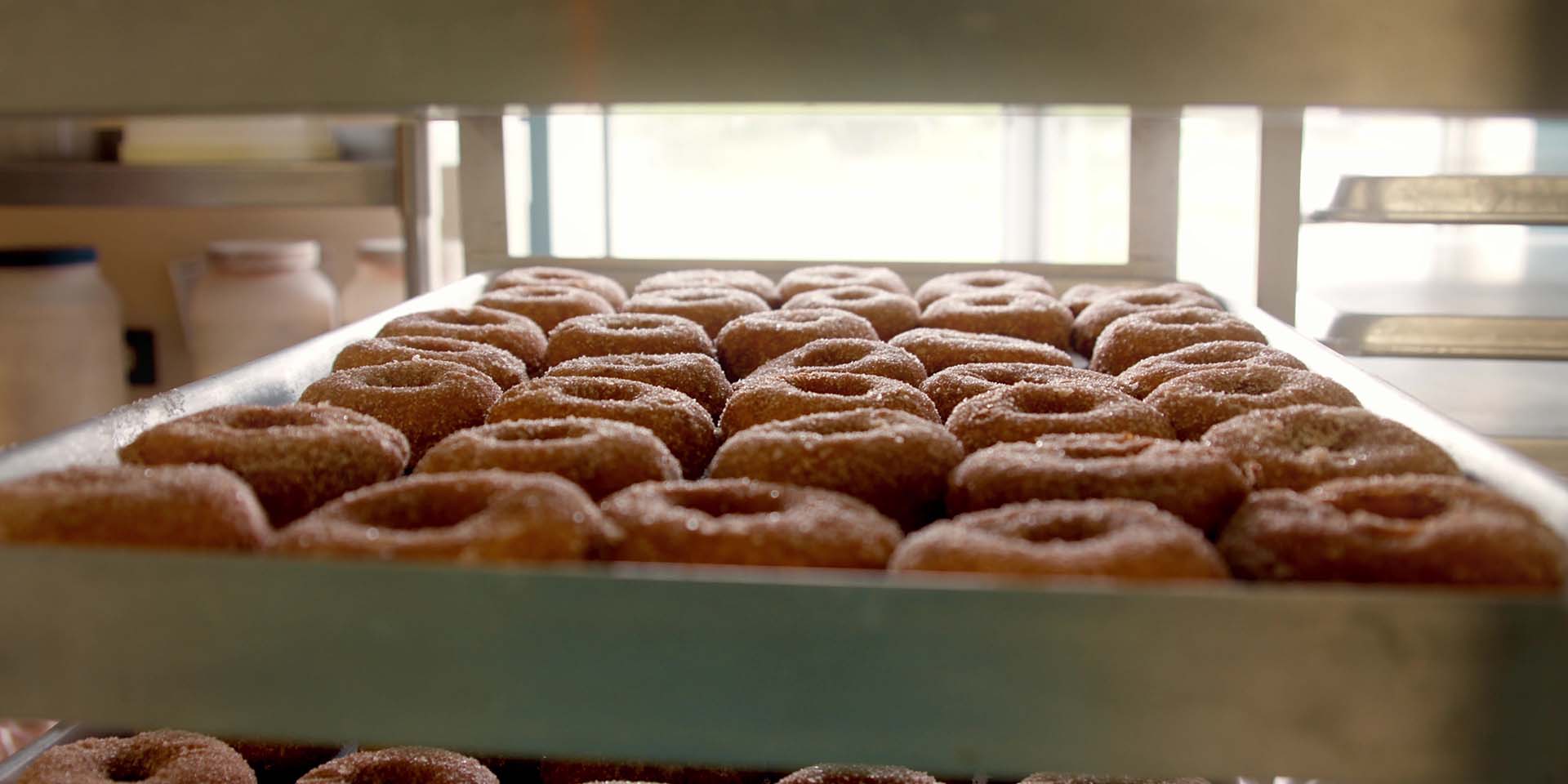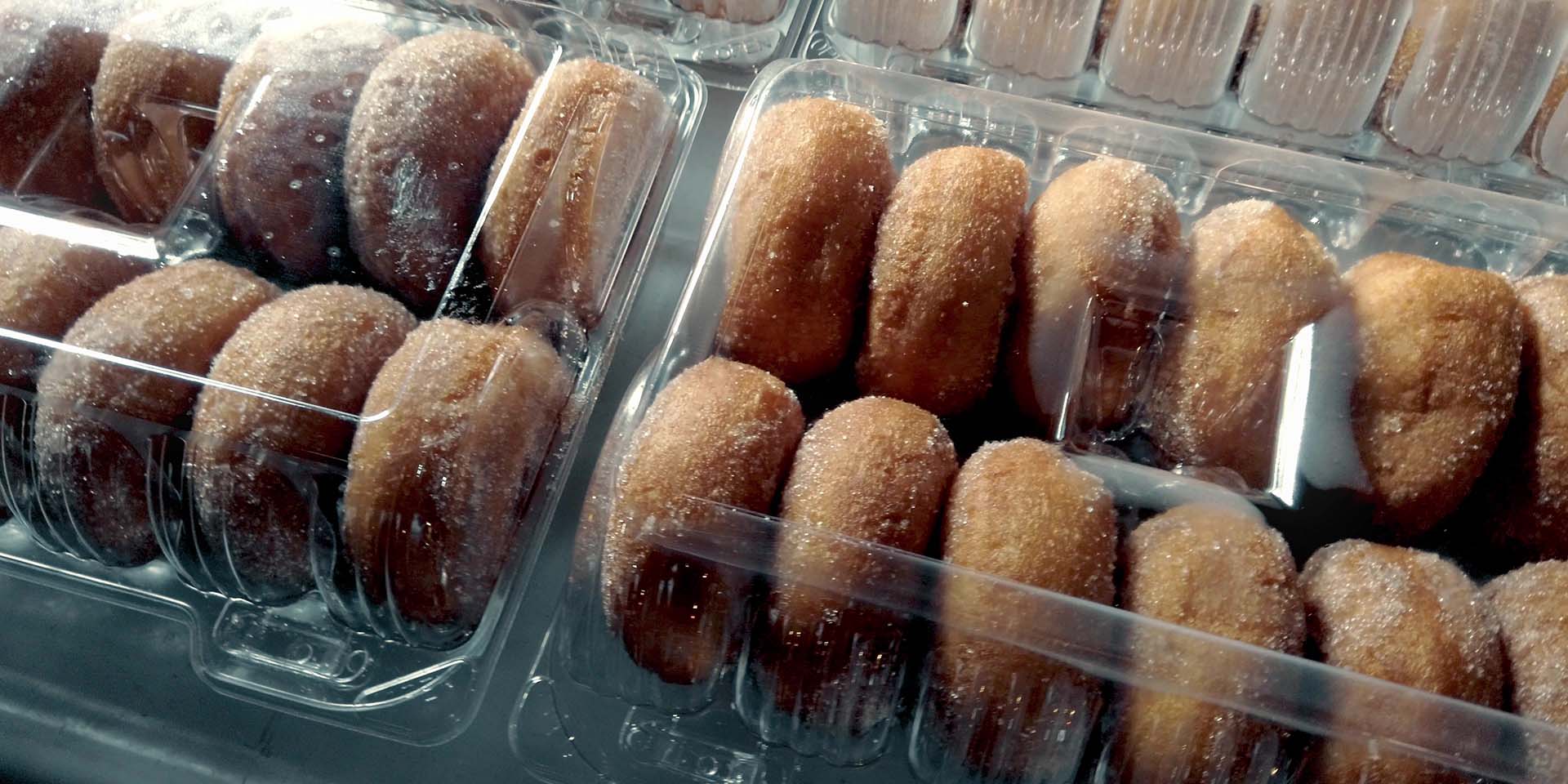For Kathy Bock, apple cider doughnuts are more than a fall treat—they're a family tradition. She's the second-generation owner of Honey Hill Orchard, where thousands of people come every autumn weekend to enjoy a day in the country, topped off with a glass of fresh-pressed cider and a doughnut. She told us the story of her family's farm and showed how she's keeping the tradition alive. The equipment may have changed, but she still uses mom's old recipe.
This interview has been edited for clarity.
The Story of Honey Hill
The orchard started as a hobby with my dad. In the mid-1960s they bought this farm. He wanted to plant just a few apple trees for the family. As the trees started producing, my parents started selling apples out of their garage in brown paper grocery bags. Neighbors would come and buy apples from us.
We consider 1977 the year that it became a business. Cider pressing started in 1977, and we opened up a little bitty store where we could sell apples and cider. From there it's just continued to grow.
About 35 years ago we put in a small kitchen and started frying doughnuts. We had to hand-crank the machine to have it drop doughnuts into a little square fryer, and then we had to flip the doughnuts with some sticks. Nothing was automated, and we'd make two dozen doughnuts at a time. In the early 2000s, we got another fryer that's more automated. It drops the doughnuts into the fryer and flips them.
When we needed more space, we decided to convert the barn, which was built sometime in the 1880s. People love to come and look at the barn—to look at the old beams and see how it was constructed. With this old barn, we keep the farm history. Every year we have so many people who say, "Please don't change a thing. We love being able to come to what feels like a farm." And we have people who say, "My parents used to bring me when I was a kid, and now I'm bringing my kids."
Today, Honey Hill Orchard is a family destination. We like to say that we help people make family memories. We've put in more apple trees, pumpkins and a fall raspberry. On weekends we do wagon rides out to the orchard and out to the pumpkin fields. And we have an area where we serve doughnuts and cider pies. In a weekend, thousands of people come out to enjoy a day in the country.


A Family Recipe
The doughnut-making really started with my mom. She thought it would be a great addition if we could start doing apple cider doughnuts at the orchard. She tried different mixes—tweaking them, figuring out how much cider to put in. She experimented for several months and came up with something that tasted great
A typical day of making doughnuts begins at about 6:30 a.m. when I turn on the equipment. The shortening has to be melted down. We try to start frying somewhere around 8 a.m., so that things are ready to go when we open at 9.
We start out with our mix. We add our cider to it. The cider is usually cold from the refrigerator. Our batter temperature has to be close to 70 degrees. We check the temperature of the flour in the morning and throughout the day. If we have warm weather and the flour is warming up, we have to adjust the temperature of our batter. It's the water that really controls the temperature of the batter. If the flour is 60 degrees, we'll add 80-degree water to get us close to that 70-degree mark.
Next, all those things go into a large mixer. We mix it on a slow speed for about two minutes. We're just checking the consistency to make sure we've got enough water. We usually start out a little bit dry and just keep adding water until we get the feel for it. It takes lots of practice.


We mix it at the lower speed just till we get it to the right consistency. Then we mix it at a higher speed for 10 to 20 seconds. Not too long. You don't want to over-beat it, because that messes with your leavening agents.
From the mixer, it goes to the dropping machine. It drops the doughnuts automatically, and they move on a conveyor. Once they get about halfway through, there's a flipper that flips them over to fry the other side. From the time the doughnut drops until it comes off the fryer, it's 110 seconds. If we see that the doughnuts are getting a little too dark, we speed up the frying, but only by a few seconds.


Once the doughnuts are done with their ride down the conveyor, they go into a cooling tray. We grab them from there and put cinnamon and sugar on them while they're hot, so it sticks to them.
We put them on doughnut racks with fans to cool them down a little bit. They're soft when they're really hot, so we've got to be careful not to break them or leave finger dents on them. If we try to box them up hot, they steam, and they end up getting soggy. When they cool a little bit, we put them in our doughnut trays for selling.


We fry until 4:30 p.m. when we stop the fryer for cleanup. Otherwise, we could be here till 8 trying to fill orders. On a weekend day when the weather's nice, we might sell 700 to 800 dozen doughnuts. The height of our season is the middle of September to middle of October. We've had some times where we've done more than 1,000 dozen in a day.


Our doughnuts are only sold on the farm. You have to come here to get them. And they're only sold during September and October. We've been contacted by restaurants who said, "Oh, we'd love to carry your doughnuts year-round. We could sell them." But I think part of what makes them so popular is that they're only available for a limited time. People know they can get them for those two months out of the year, and they're waiting those other 10 months till they can come back. It's a fall memory.
The information contained in this article is intended for general information purposes only and is based on information available as of the initial date of publication. No representation is made that the information or references are complete or remain current. This article is not a substitute for review of current applicable government regulations, industry standards, or other standards specific to your business and/or activities and should not be construed as legal advice or opinion. Readers with specific questions should refer to the applicable standards or consult with an attorney.








